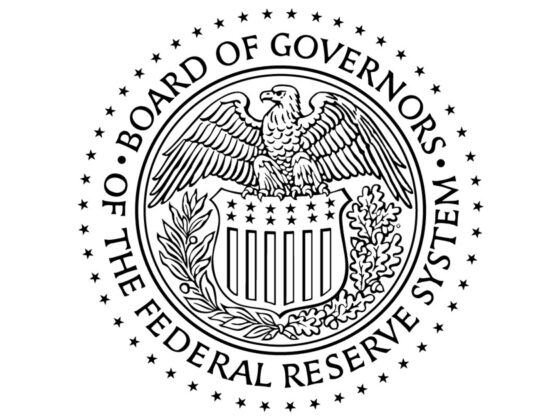The mild rebound recorded in Q4 2024 enabled Italy’s real GDP to grow by 0.5% over the year. In 2025, real GDP is expected to grow by 0.8%, while in 2026, it should reach 1.3%. GDP growth is expected to remain subdued in the first part of 2025. It should gain momentum later in the year, mainly driven by consumption, which is projected to benefit from increased disposable income. In 2024, labour market conditions showed a favourable trend: in Q4, the number of people employed was 756,000 higher than in Q4 2019. The uncertainty surrounding international trade is likely to prevent the foreign sector from contributing significantly to economic growth.
Economic activity: A recovery in investment at the end of 2024 underpins mild GDP growth
In 2024, the Italian economy grew by 0.5% on an annual average basis. Net exports and domestic demand contributed most to real GDP growth (+0.3 p.p. and +0.4 p.p. respectively), while inventories held back growth (-0.2 p.p.).
After stagnating in Q3, the Italian economy experienced a slight rebound in Q4, with real GDP rising by 0.1% q/q. Thanks to the good performance in Q4, real GDP at the end of 2024 was 5.9% higher than in Q4 2019. Notably, in the last quarter of 2024, fixed investment rebounded by +1.6% q/q after three consecutive declines. The recovery benefited all sectors, but mainly affected investments in machinery and the construction sector, which also benefited from the strengthening of the financial structure of Italian firms.
Added value grew by 2.0% y/y in agriculture, 0.7% in construction and 0.9% in services, while it decreased in industry (-1.5%). The weak performance of the manufacturing sector over the last two years was mainly due to the struggling energy-intensive wood and paper, metals and chemicals industries. This was compounded by the on-going difficulties in the textiles, clothing and leather industries: in 2024, production in these sectors was 30% lower than in Q4 2019.
Spillovers from Germany’s economic rebound expected in 2025-2026, and the ReArm EUplan should stimulate Italian growth over the next two years. However, the uncertainty surrounding international trade might prevent exports from supporting economic growth. Moreover, the phasing out of incentives for residential construction investment should be only partly offset by measures implemented through Next Generation EU funds. For this reason, investment should contribute only marginally to growth. Therefore, Italy’s real GDP is expected to grow by 0.8% in 2025. In 2026, it should reach 1.3%, notably driven by higher growth in Germany.
International trade faces downside risks from escalating frictions and geopolitical tensions. These could create new obstacles within global supply chains. Preliminary estimates project a 0.2 p.p. fall in Italian GDP were the threatened tariffs to be fully applied. The agro-food, pharmaceuticals, and chemicals sectors are expected to experience the most pronounced impacts, with potential reductions in exports, while fashion and furniture may undergo a more modest contraction due to the high level of product differentiation in these areas making these products less easy to replace in the short run.
Labour market: Employment continued its favourable trend
In 2024, the labour market maintained its positive momentum. In Q4, the number of people employed was 168,000 higher than a year earlier. This brought the employment rate to 62.4% – a historically high level, although still below the EU average (70.9% for the 15-64 age group).
Despite this positive trend, the Italian labour market is suffering from the demographic decline, which is shrinking younger cohorts and making it more difficult to replace older workers. In Q4 2024 the number of employed people was 756,000 higher than in Q4 2019 . However, this increase was largely driven by the 55-64 age group, whereas the rise among those aged 25-34 was more limited. In contrast, employment in the 35-54 age group declined.
Structurally, employment in Italy has been supported by controlled labour costs. In recent years, labour costs have risen more slowly than inflation, making labour a cheaper input compared to other production factors. Most companies have sought to preserve their human capital, even at the cost of retaining underutilized workers (labour hoarding). According to Istat, between Q4 2019 and Q3 2024, gross wages per unit of labour increased by less than 10%, while consumer prices rose at twice that rate.
The situation is expected to shift as firms increasingly adopt Artificial Intelligence (AI). According to the Bank of Italy, approximately 15 million workers are either moderately or highly exposed to AI. An “exposed” occupation is one linked to certain AI applications. This does not necessarily imply a risk of replacement but may indicate potential complementarities. The complementary workers are more numerous than the replaceable ones (9 million versus 6 million, respectively).
Inflation: The recovery in household purchasing power supports private consumption
In Q4, private consumption in Italy increased (+0.1% q/q, after +0.4% in Q3) mainly due to an improvement in both the economic situation and households’ financial conditions.
Recently, household consumption also benefited from increased purchasing power. In 2024, hourly contractual wages rose by about 3% y/y, outpacing inflation (which fell from 6% y/y in 2023 to 1.1% in 2024). At the beginning of 2025, the annual inflation rate rose to 1.7%, primarily due to rising food and energy prices. Although higher than in 2024, inflation should still remain below the 2% level for the next two years (+1.7% in 2025 and 2026).
Fiscal policy: Improving public finances
Despite the economic slowdown, Italy’s public finances improved significantly in 2024. The public deficit-to-GDP ratio fell from 7.2% to 3.4%, reflecting both higher revenue and lower expenditure. The primary balance also improved, shifting from -3.6% to +0.4%. For its part, the tax burden (measured as the ratio of total revenues to nominal GDP) remains high: it increased from 41.4% in 2023 to 42.6% in 2024. Overall, the increase in defence spending could weigh on Italy’s public finances (see our focus).
Foreign trade: Among the EU countries most exposed to non-EU markets
After increasing by about 20% in 2021 and 2022, Italy’s exports in value grew by 1.9% in 2023 and marginally declined (-0.4%) in 2024 . On the positive side, food exports grew by 8% and pharmaceutical exports by 9.5%. On the downside, sales of metal products declined by 3.3% and those of transport equipment fell by more than 12%.
In 2024 Italian exports were affected by weakness in Germany, the main destination for Italy’s goods (accounting for 11.4% of total exports). Sales to Germany dropped 5%, mainly due to the decline in transport equipment exports (-20.2%) and metal products (-10.9%). However, Italian food exports to Germany rose by 5.5%, while pharmaceutical exports increased by almost 16%.
Italy is one of the EU countries most exposed to non-European markets. In 2024, over 48% of Italy’s total exports went to countries outside the EU, compared to 45% for Germany and France and just 37% for Spain. The United States is the second largest importer of Italian goods, accounting for 10.4% of total exports – almost twice as much as in 2010. In 2024, exports to the US declined by 3.6%. Sales of transport equipment fell by more than 30%, while food exports rose by 17% and pharmaceutical exports by 26%.
Challenges: German Investment Policies and Spillover Effects on Italy
On 18 March, Germany’s parliament approved a comprehensive spending package, which includes a EUR 500?billion infrastructure fund over 12 years and relaxations in debt regulations for defence spending. Given Germany’s role as Italy’s primary trading partner, the plan is expected to stimulate Italian exports, particularly in machinery and intermediate goods. The interdependence between the German and Italian economies has been evident in past economic cycles. A very recent Istat research report estimates that weak German growth reduced Italian GDP by 0.2% in both 2023 and 2024.
Positive spillover effects on Italy's economy could also come from enhanced trade and collaborative opportunities. Increased demand for construction materials, machinery, and technology could drive export-driven growth, while joint infrastructure and defence projects may stimulate deeper industrial cooperation between Italian and German firms. However, uncertainties remain regarding the timeline for implementation of Germany's investment plan and its broader economic impact.
Focus | Impact of the Readiness 2030 Plan on Italy
Under the ReArm EU plan, EU Member States will be allowed to increase defence spending beyond the limits set in the national medium-term fiscal-structural plans, up to an additional 1.5 pp of GDP. Defence investments across the EU could reach EUR 800?billion over four years, including a EUR 150?billion fund (Security Action for Europe) allocated to back loans for defence investments.
A recent analysis by OPCI (an Italian think tank) presents a scenario where Italy’s defence spending gradually rises from 1.6% of GDP in 2024 to 3.1% by 2028. Under this scenario, the additional EUR 128?billion in expenditure is estimated to increase the deficit by approximately EUR 15?billion on average each year (0.6 percentage points of GDP), as it should be partially financed through fiscal savings. Italy’s debt-to-GDP ratio should reach 135.5% by 2031, exceeding both the 2024 level (+0.02 p.p.) and the baseline forecast in the Structural Budget Plan (+3.5 p.p.).
Article completed on 17 April 2025





